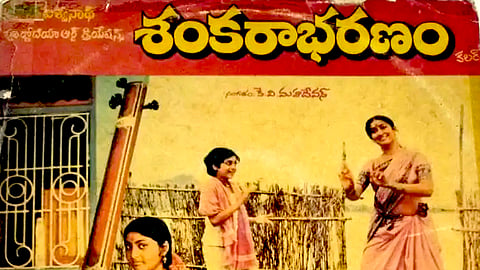- Commentary
- History Vignettes
- Notes on Culture
- Dispatches
- Podcasts
- Indian LanguagesIndian Languages
- Support

HISTORY OFFERS VERIFIABLE PROOF for the fact that reckless industrialization and western-style capitalist democracy have killed artistic excellence in its truest sense. We can define artistic excellence as the inherited classicism that we discern in the realm of Indian art. Its central features include a deep and abiding love and reverence for truth, beauty, nature, language, contemplation, a sense of heroism, an exploration of timeless values… but above all, a sense of awe and wonderment.
It is precisely these that have been destroyed in the post-industrialized democracy where there is nobody and nothing higher than the individual human being who has been redefined variously as (1) a component of an economic machine (2) a mere being “condemned to exist” (3) a consumer and (4) a rootless entity.
The attendant consequences have been entirely predictable.
The societal, communal and other environments that had sustained the aforementioned classical tradition were also concomitantly destroyed. The West stands as the most glaring archetype of this destruction: only a hazy trace of classical learning and art exists there today.
But in India’s case, while the trajectory of this destruction has been different, the outcome has remained more or less similar.
However, unlike the West, many definitive facets of our classical traditions have been preserved in dance, drama, music, poetry, literature, painting, sculpture and temple-building because a sizeable section of Hindus have not become utterly rootless.
It is in this context that K. Viswanath’s celluloid portrayals of our classical artistic traditions become significant. This is apart from the primary purpose of savouring his movies for Rasāsvāda (aesthetic experience).
One of the most striking aspects of Viswanath’s depictions of our traditional and rural society is the seeming effortlessness with which he showcases raw nativity. Subtlety and restraint are their hallmarks. Pain and tragedy are sublime, not loud. Pleasure and joy are endearing, not raucous.
We can contrast these portrayals with movies made in other languages roughly during the same period. The depictions of life in rural Karnataka or Tamil Nadu are a childish mix of naiveté, noise and sloganeering albeit with good intentions. The contrast is the difference between Dhvani (suggestion) and Vachyata (explicitness).
***
K. VISWANATH HAD LEARNED HIS CRAFT and honed his creativity during the Golden Era of Telugu cinema. This era was characterized by a rich classical milieu that distilled the best essences of traditional drama, classical Telugu poetry, linguistic oeuvre, and classical music. This era delivered prolific blockbusters based on folk, epic and Puranic themes. The range of this oeuvre is as impressive as it is enduring: Maya Bazar, Patala Bhairavi, Jagadeka Veeruni Katha, Sri Krishna Pandaveeyam, Pandava Vanavasam, Lava Kusha, Nartanashala, Sri Krishna Tulabharam, Sri Krishnarjuna Yuddhamu, Bhakta Prahalada, Sri Krishnavataram… As we shall see, it is not a coincidence that the decline of Telugu cinema began with the end of this era. With the ascendance of mindless potboilers, only K. Viswanath’s movies came as the much-needed oases.
When we observe the imprint of these Golden Era-movies in Viswanath’s body of work, it is clear how deeply he has drunk from that nourishing fount. The imprint is understated and it shows how Viswanath’s unique genius transformed his professional training into masterpieces of cinematic art.
The other complementary factor was his deep anchorage in and attachment to the unblemished Telugu cultural nativity found in the Guntur-Krishna-Godavari region. Its opulent tapestry of temple traditions, rural beliefs, customs, family and community life, and folk arts became the staple ingredients using which Viswanath served us cinematic feasts. His contemporaries also used the same ingredients and delivered impressive hits but these did not become enduring works of art. Viswanath’s distinction lies in his mastery over the precise idiom required to transform these ingredients into art.
A notable aspect of the use of this rural idiom in visual storytelling is how Viswanath contextualizes the story which unfolds the values of that society through characters. This technique reflects a layered emotional and experiential range, which is hard to describe in words. Among other things, it is this artistry and craftsmanship that give his movies their superb repeat-value. You get something new and lovely with each viewing.
But the rural setting and idiom is just the canvas that serves a larger and deeper purpose. He uses it repeatedly, he uses it even as a sort of leitmotif because he is intimately familiar with it. In the same manner that Dr. S.L. Bhyrappa has used the Old Mysore region in his acclaimed novels. But even in movies like Swarnakamalam which is set in the urban environs of Vishakhapatanam, Viswanath carves out the repalle (rural) clime inside the city.
Which reveals another dimension of Viswanath’s creativity: he does not depict one hundred percent of this rural society. He locates his plot in a slice of this rural life where people and not systems, are the prime focus. People occupy the centrestage. But for this technique, his movies would have become slightly better than documentaries or “issue-based” films.
We will examine various nuances of how Viswanath has used this technique in some of his memorable films.
To be continued
The Dharma Dispatch is now available on Telegram! For original and insightful narratives on Indian Culture and History, subscribe to us on Telegram.
